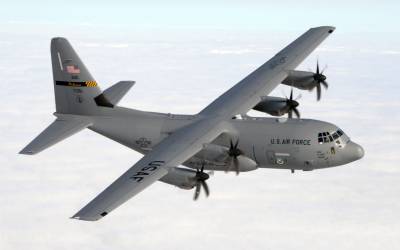DDG-110 Construction (click to view full) In April 2009 Bath and Ingalls agreed to the Navy's surface combatant plans, thus heralding a significant restructuring within the American naval shipbuilding community. Under the agreements, the USA would end production at 3...
Pre-RFP Articles
USAF Asks For NGAS Engines | US Tinkering With High Energy Lasers In Iraq | BAE Builds New Nuke Subs For Downunder
Americas Mid-Atlantic Technical and Executive Consulting LLC won a $10.4 million firm-fixed modification to a previously awarded contract. This modification adds scope through additional contract line-item numbers for technical evaluation, proposal evaluation, cost...
USAF Asks For NGAS Engines | Iraq Procures New Anti-Aircraft Weapons | India Created AH-64E Squadron
Americas The US Air Force is asking industry partners for engines to power its Next-Generation Air Refueling System (NGAS) aircraft. A request for information (RFI) released Monday states that the service will accept new or existing propulsion systems provided that...
HII Tapped For Ford Class Switchboards | DoS Approved Javelin Deal To Morocco | DoS Approved Abrams Deal To Bahrain
Americas The dream of equipping the AC-130J Ghostrider gunship with a high-energy laser weapon system has come to an end. The U.S. Air Force Special Operations Command (AFSOC) has officially shelved its Airborne High Energy Laser (AHEL) program due to “technical...
Pilum High: The Javelin Anti-Armor Missile
Javelin, firing (click to view full) The FGM-148 Javelin missile system aimed to solve 2 key problems experienced by American forces. One was a series of disastrous experiences in Vietnam, trying to use 66mm M72 LAW rockets against old Soviet tanks. A number of...
Armasuisse Started Tiger Delivery To US | Kongsberg NASAMS Delivery Times To Be Improved | Belgium Approved More Military Aid For Ukraine
Americas The Swiss Federal Office for Armaments (armasuisse) has started delivery of 22 decommissioned F-5E/F Tiger II fighter jets to the United States. The first aircraft was picked up by the United States Marine Corps (USMC) on March 18 from Emmen Air Force Station...
The C-130J: New Hercules & Old Bottlenecks
RAAF C-130J-30, flares (click to view full) The C-130 Hercules remains one of the longest-running aerospace manufacturing programs of all time. Since 1956, over 40 models and variants have served as the tactical airlift backbone for over 50 nations. The C-130J looks...
US Space Force Awarded Boeing For WGS Constellation | Niger Breaks Off Military Cooperation With US | Japan Approves approves Export of F-X Jet
Americas Lockheed Martin won a $21 million modification, which exercises an option to provide maintenance and sustainment operations of the Australia, Canada and United Kingdom Reprogramming Laboratory facilities and systems for the F-35 A/B aircraft program. Work...
The New Chinooks: Boeing’s Modern H-47 Heavy-Lift Helicopters
CH-47Fs take off (click to view full) DII FOCUS articles offer in-depth, updated looks at significant military programs of record; this FOCUS Article covers the CH-47F/MH-47G Chinook helicopter programs, in the USA and abroad. These helicopters' distinctive "flying...




